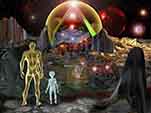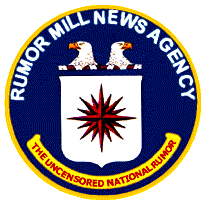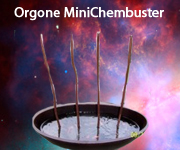This is from "Chlorine Disinfection", posted at the Civil Engineering Dept., Virginia Tech web site:
http://www.cee.vt.edu/program_areas/environmental/teach/wtprimer/chlorine/chlorine.html
(** Note who it was that set sanitation standards in 1914.)
I'm posting this because I have a hunch Polio might be related to chlorination of municipal water supplies - and, as someone has already written (if I can find it), the Great Flu Epidemic is easily related, time-wise, to the introduction of chlorination.
Not included in the timeline below:
1908, chlorination in use to some degree throughout America and the world;
1911, Seattle introduces their first chlorination;
[ 1913 - particular subversion of American sovereignty ]
1914, Seattle expands chlorination into full use;
1916, the famous "anarchist bombing" in San Francisco, plus epidemic outbreak of Polio in NYC - all this while President Wilson, elected on the slogan "He Kept Us Out Of War", is busily preparing the American people for the idea they'll be in that war pretty soon, now.
Labor union strikes in 1916: 2000. Children were still working in the mines and elsewhere; and strenuous activism was underway by suffragettes.
1918 -- some say 1917-1920 --, the Great Influenza Epidemic, believed to be caused by a "bug" brought to Europe by American soldiers and then back to America by the returning soldiers. (German) Bayer's new wonder drug, _aspirin_, is credited with holding down deaths in America from this epidemic.
2000, many municipal sewage districts explain they must raise their rates. Part of the reason: chlorination will be replaced by really good filtration and ultraviolet disinfection. (But wait - if there's a big ol' hole in the ozone layer, why not let the sewage be exposed to sunlight and charge us less...? :)
-----
1879
- This marked the first time that chlorine was applied as a
disinfectant. William Soper of England treated the feces of typhoid patients before disposal into the sewer. He used chlorinated lime, which was a common form of chlorine used initially. (White, 1972)
1893
- This date was the first time that chlorine was applied as a disinfectant on a plant scale basis. This application was made at Hamburg, Germany. (White, 1972)
1903
- This marked the first time chlorine gas was used as a disinfectant in drinking water. This took place in Middlekerke, Belgium. Prior to this date, chlorine was applied through the use hydrated lime, chloride of lime, or bleaching powder. The use of chlorine gas was designed by Maurice Duyk, a chemist for the Belgian Ministry of Public Works. (Pontius, 1990)
1908
- The first full scale chlorine installation at a drinking water plant in the United States was initiated in this year. This installation took place at the Bubbly Creek Filter Plant in Chicago. This plant served the Chicago Stockyards and was designed by George A. Johnson. The raw water contained a large amount of sewage which was causing sicknesses in the livestock. Johnson implemented chlorine through chloride of lime, and the bacterial content of the water dropped drastically. (Pontius, 1990)
1910
- C. R. Darnall became the first to use compressed chlorine gas from steel cylinders which is an approach still commonly used today. His installation was in Youngstown, Ohio. His implementation used a pressure-reducing mechanism, a metering
device, and an absorption chamber. It was moderately successful, but his setup was only used once. The photo [not included here] to the right is typical of modern design. (White, 1972)
1912
- John Kienle, chief engineer of the Wilmington, Delaware water department, invented another way to apply chlorine to drinking water. He developed a way to push compressed chlorine from cylinders into an absorption tower in which water was flowing opposite the flow of the chlorine. Because the gas flow was opposite the water flow, the chlorine was able to disinfect the water. (Pontius, 1990)
1913
- An Ornstein chlorinator was installed at Kienle's Wilmington, Delaware water treatment plant. This marked the first time a commercial chlorination system was installed at a municipal water
treatment plant. The chlorinator used the same basic premise that Kienle's previous installation did, but the Ornstein chlorinator used both a high and low pressure gauge to more accurately control the amount of chlorine added to the system. (Pontius, 1990)
1914
- On October 14, 1914, ** the Department of the Treasury ** enacted the first set of standards that required the use of disinfection for drinking water. These standards called for a maximum level of bacterial concentration of 2 coliforms per 100 millilters. Because chlorination was the main disinfectant at the time, these standards dramatically increased the number of treatment plants using chlorine. (White, 1972)
1919
- Two important discoveries were made during this year. Wolman and Enslow discovered the concept of chlorine demand which states that the amount of chlorine needed to disinfect the water is related to the concentration of the waste and the amount of time the chlorine has to contact the water. The other important discovery of 1919 was by Alexander Houston. He discovered that chlorine can also eliminate taste and odor problems in water. (Pontius, 1990)
1925
- New drinking water standards were enacted that reduced the maximum permissible limit of coliforms from 2 to 1 coliform per 100 millilters. This increased the amount and frequency of chlorination again. (White, 1972)
1939
- The theory of the chlorine breakpoint was discovered in this year. Chlorine breakpoint theory is discussed in the following section. (White, 1972)
1960
- A new implementation practice was discovered in this year. The compound loop principle of chlorinator control was implemented, which is the most recent major discovery in chlorine application. (White, 1972)
1972
- A report entitled "Industrial Pollution of the Lower Mississippi River in Louisiana" was published containing the first evidence of disinfection byproducts in drinking water resulting from organic pollution in source water. (Pontius, 1990)
-----






































